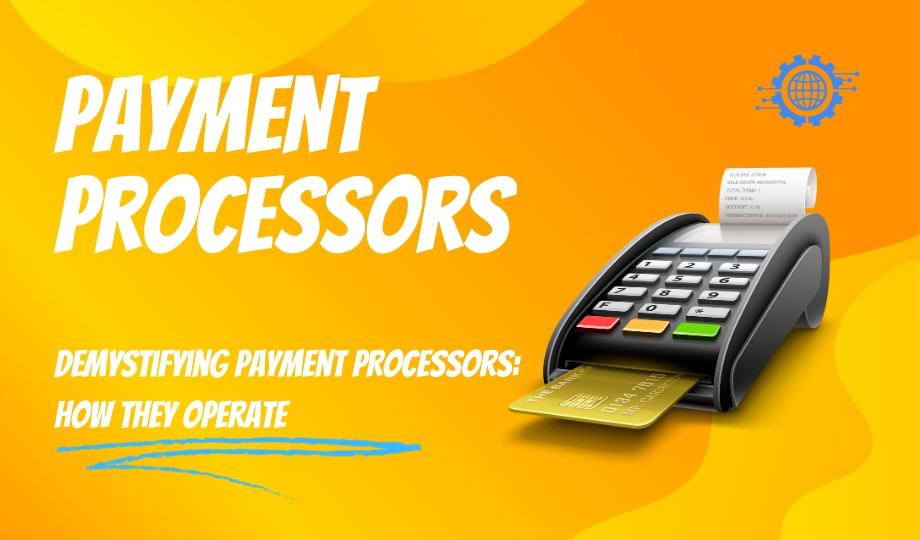In today’s digital age, billions of transactions transpire within seconds, fostering seamless interactions between merchants, processors, card networks, and banks. Whether it’s an in-store terminal, an online web interface, or an in-office process, the transaction commences with the simple initiation of payment. Payment information embarks on a journey from the merchant’s processor to the card network and the issuer’s processor, seeking authorization.
Upon validating the transaction’s legitimacy, the issuer or processor gives the green light to the cardholder to proceed with the purchase. Subsequently, this authorization response traverses the card network, returning to the merchant’s terminal and informing the cardholder. The entire process unfolds in a matter of milliseconds, showcasing the remarkable efficiency of payment processors in handling multifaceted transactions.
Understanding Payment Processors
Businesses rely on payment processors as essential partners to manage the intricacies of accepting card payments. Payment processors serve as intermediaries, bridging the gap between financial institutions and the merchant. They orchestrate credit card transactions, ensuring merchants receive their payments in a timely manner through fund transfers. Beyond this, payment processors may offer tools for card acceptance, support for PCI compliance, security solutions, customer assistance, and other value-added services in the realm of payment processing.
The need for a payment processor is paramount for businesses that embrace card payments. Some companies integrate payment processing with hardware and point-of-sale systems, while others, like Payment Depot, concentrate solely on facilitating payments. The choice between these alternatives hinges on factors such as your business’s sales volume and the modes of payment you wish to accommodate.
How Payment Processors Operate
The payments landscape is littered with terminology, but at its core, the process is relatively straightforward. For those who wonder about the intricacies of debit or credit card payments when customers approach the payment gateway, here’s a step-by-step procedure to clarify the process:
Customer Checkout: The customer initiates the checkout process, opting to pay with a debit or credit card, providing their card details.
Merchant to Payment Gateway: In this step, the merchant conveys the cardholder’s financial information to the payment gateway.
Payment Gateway to Processor: After receiving the transaction details, the payment gateway forwards this information to the third-party processor designated by the merchant.
Processor to Card Network: The payment processor transmits the transaction details to the card network, which could be Mastercard or Visa.
Card Network to Issuing Bank: The card network shares the transaction details with the customer’s bank, where the availability of sufficient funds in the account for transaction completion is assessed.
Issuing Bank Response: At this juncture, the card network communicates the response, indicating whether the transaction has been approved or declined.
Response Transmission: The card network transmits the response to the payment processor, which, in turn, communicates it to the payment gateway, informing both the merchant and the customer.
Funds Transfer: Finally, the customer’s bank proceeds to transfer the funds into the merchant’s account. This may take a few minutes or occur at scheduled intervals, as agreed upon, before the funds reach the merchant’s business account.
Considerations When Selecting a Payment Processor
While transaction costs are integral to the decision-making process, several other key factors should be weighed when choosing a payment processor. It’s crucial to examine the complete spectrum of processing costs, including monthly fees, transaction fees, chargeback fees, setup costs, membership fees, PCI compliance fees, and cancellation fees, to arrive at the total monthly expense.
Here are some primary considerations for selecting a payment processor:
PCI Compliance: Ensure the payment processor adheres to Payment Card Industry Data Security Standards (PCI DSS) to safeguard cardholder data and protect it during storage, transmission, and processing.
Integrated Payments: Streamline your operations by integrating payment processing with your existing software platforms, which helps automate transaction synchronization with CRM, accounting, and other tools.
Reconciliation: Leverage online payment gateways to access reconciliation dashboards, enabling in-depth tracking of payments and transaction history for comprehensive financial analysis and reporting.
Supported Countries: Verify that the payment processor operates in the countries you intend to do business in, as not all processors offer their services worldwide. Select a processor that aligns with your global reach.
Industry Compatibility: Ensure that the payment processor accommodates the specific industry your business operates in, especially if it entails high financial risks or compliance regulations.
In Conclusion
Payment processors are fundamental to the functioning of online businesses, offering the convenience and efficiency required for seamless payment experiences. The choice of a payment processor is a critical decision, and a thorough evaluation of your options is essential. By considering the factors outlined above, you can make an informed decision and ensure a frictionless payment experience for your customers.
Selecting the right payment processor empowers your business, boosts customer satisfaction, and lays the foundation for success in the digital age.

